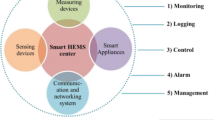Abstract
Recently, wireless transmission of medical data of the patients in heterogeneous networks evoked keen interest among researchers. However, the challenges such as efficient utilization of the frequency spectrum, increase in the lifetime of the devices are considered to be the most important issues nowadays. In this project, while considering the above mentioned challenges for an efficient use of medical devices among the patients, design of cognitive radio network has been incorporated, along with the Hospital Management System. The proposed paper developed a new algorithm/network called Bio Cog—for the implementation of the cognitive networks for transmitting the medical data, which uses efficient frequency spectrum allocation method. The energy efficiency has been achieved by incorporating new algorithm (D2V algorithm) in cognitive networks. The proposed system uses the principle of novel spectrum sensing techniques in the wireless cognitive radio networks. In this research, heterogeneous network has been taken into account by working with different wireless technologies such as XBee, Wi-Fi and Bluetooth and accordingly, different frequency bands are allocated. When the spectrum is sensed by the designed hardware, it decides on allotting the vacant band to the specified users. All users are connected with temperature sensors whose temperature is measured continuously based on which the users are given priority in allotting the spectrum. Thus the hardware can be used in medical applications and tested for one such application called Hospital Management System which is developed and implemented in this work. The hardware has been designed to implement the Dynamic Distance Vector Algorithm (D2VA) in which the distance plays an important role in deciding the threshold range for sensing.














Similar content being viewed by others
References
Wang, S., Zhou, Z.-H., Ge, M., & Wang, C. (2013). Resource allocation with heterogeneous cognitive radio networks with imperfect spectrum sensing. IEEE Journal on Selected Areas in Communications, 31(3), 464–475.
Alesanco, A., & Garcia, J. (2010). Clinical assessment of wireless ECG transmission in real-time cardiac telemonitoring. IEEE Transactions on Information Technology in Biomedicine, 14(5), 1144–1152.
Pandya, U. T., & Desai, U. B. (2012). A novel algorithm for Bluetooth ECG. IEEE Transactions on Biomedical Engineering, 59(11), 3148–3154.
Chen, S. K., et al. (2012). A reliable transmission protocol for ZigBee-based wireless patient monitoring. IEEE Transactions on Information Technology in Biomedicine, 16(1), 6–16.
Pavlopoulos, S., Kyriacou, E., Berler, A., Dembeyiotis, S., & Koutsouris, D. (1998). A novel emergency telemedicine system based on wireless communication technology—AMBULANCE. IEEE Transactions on Information Technology in Biomedicine, 2(4), 261–267.
Komaki, S., Idrus, S. M., Wakabayashi, T., Mujahidul Islam, A. K. M., Baharun, S., & Hasan, W. H. (2014). Heterogeneous cognitive radio sensor networks through RoF-MIMO technologies. International Journal of Sensors and Sensor Networks, 3(1), 1–10.
Lee, J.-S., Su, Y.-W., & Shen, C.-C. (2007). A comparative study of wireless protocols: Bluetooth, UWB, ZigBee and Wi-Fi. In The 33rd Annual Conference of IECON, Nov 2007.
Miller, R., Xu, W., Kamat, P., & Trappe, W. (2007). Service discovery and device identification in cognitive radio networks. In IEEE Workshop on Networking Technologies for Software Define Radio Networks (pp. 40–47). IEEE, San Diego, CA.
Huang, J., Xing, G., Zhou, G., & Zhou, R. (2011). Beyond coexistence: Exploiting Wi-Fi whitespace for ZigBee performance assurance. Virginia: National Science Foundation.
Rawat, D. B., Zhao, Y., Yan, G., & Song, M. (2013). CRAVE: Cognitive radio enabled vehicular communications in heterogeneous networks. In IEEE Radio and Wireless Symposium (RWS) (pp. 190–192). IEEE, Austin, TX.
Setoodeh, P., & Haykin, S. (2009). Robust transmit power control for cognitive radio. Proceedings of the IEEE, 97(5), 915–939.
Nasif, A. O., & Mark, B. L. (2009). Opportunistic spectrum sharing with multiple cochannel primary transmitters. IEEE Transactions on Wireless Communications, 8(11), 5702–5710.
Zhou, X., Li, G. Y., Li, D., Wang, D., & Soon, A. C. K. (2010). Probabilistic resource allocation for opportunistic spectrum access. IEEE Transactions on Wireless Communications, 9(9), 2870–2879.
Zhang, H., Zhang, Z., Dai, H., Yin, R., & Chen, X. (2011). Distributed spectrum aware clustering in cognitive radio sensor networks. In IEEE Globecom 2011 Proceedings.
Zhang, X., Ying, X., Mao, H., & Bae, H. Y. (2015). Localisation and privacy preservation in cognitive radio networks. International Journal of Multimedia and Ubiquitous Engineering, 10(1), 403–416.
Sokolowski, C., et al. (2008). Cognitive radio testbed: Exploiting limited feedback in tomorrow’s wireless communication networks. In Communications Workshops, 2008. ICC Workshops’ 08. IEEE International Conference on. IEEE.
Mishra, S., Cabric, D., Chang, C., Willkomm, D., van Schewick, B., Wolisz, S., & Brodersen, B. (2005). A real time cognitive radio testbed for physical and link layer experiments. In Proceedings of 1st IEEE International Symposium New Frontiers in Dynamic Spectrum Access Networks.
Raychaudhuri, D., Mandayam, N., Evans, J., Ewy, B., Seshan, S., & Steenkiste, P. (2006). CogNet: An architectural foundation for experimental cognitive radio networks within the future internet. In Proceedings of 1st ACM/IEEE International Workshop Mobility Evolving Internet Architecture (pp. 11–16).
Raychaudhuri, D., Seskar, I., Ott, M., Ganu, S., Ramachandran, K., Kremo, H., et al. (2005). Overview of the ORBIT radio grid testbed for evaluation of next-generation wireless network protocols. In Proceedings of Wireless Communications and Networking, IEEE Conference (Vol. 3, pp. 1664–1669).
Author information
Authors and Affiliations
Corresponding author
Rights and permissions
About this article
Cite this article
Bharatula, S., Meenakshi, M. Design of Cognitive Radio Network for Hospital Management System. Wireless Pers Commun 90, 1021–1038 (2016). https://doi.org/10.1007/s11277-016-3280-2
Published:
Issue Date:
DOI: https://doi.org/10.1007/s11277-016-3280-2




